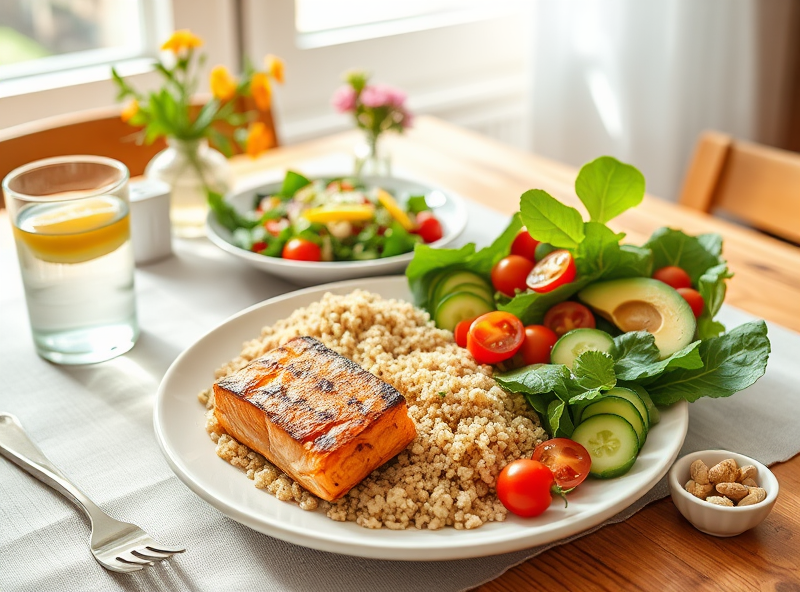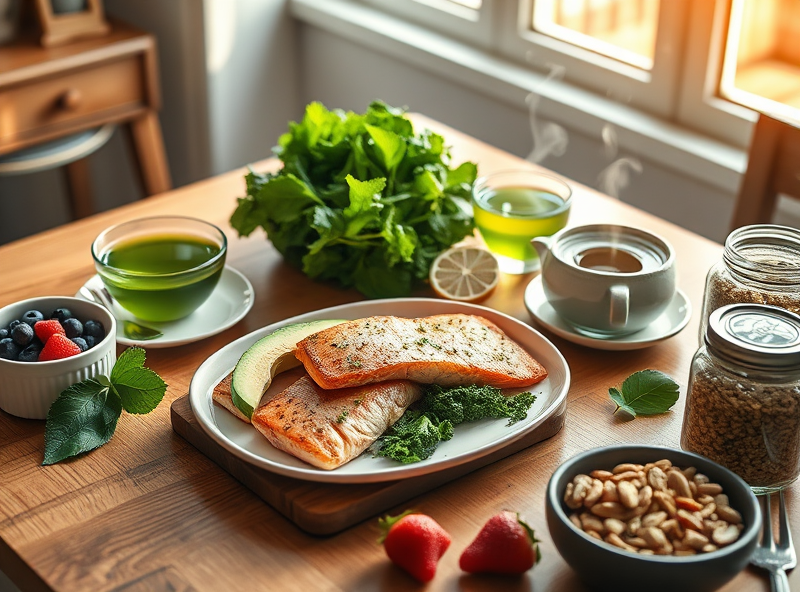
Effective Ways to Lose Visceral Fat Fast: Diet, Exercise, and Tips
Healthy Diet for Burning Visceral Fat

When it comes to reducing visceral fat, adopting a healthy diet is one of the most effective strategies. Visceral fat, which surrounds your internal organs, can pose serious health risks, but the good news is that it can be managed with the right nutritional choices. Start by focusing on whole, unprocessed foods like vegetables, fruits, lean proteins, and whole grains. These foods are rich in fiber, which helps you feel full longer and supports healthy digestion. Incorporating healthy fats, such as those found in avocados, nuts, seeds, and olive oil, can also help reduce visceral fat by promoting better metabolic health. Avoid sugary drinks, refined carbs, and trans fats, as these can contribute to fat accumulation around your organs. Instead, opt for water, green tea, or herbal teas to stay hydrated and support fat-burning processes. Lastly, practice mindful eating by paying attention to portion sizes and eating slowly to prevent overeating. Remember, small, consistent changes to your diet can lead to significant improvements in your overall health and help you burn visceral fat effectively.
Best Exercises to Reduce Belly Fat

Reducing belly fat, especially visceral fat, requires a combination of consistent exercise and a healthy lifestyle. While spot reduction is a myth, there are specific exercises that can help you target your core muscles, improve metabolism, and burn overall body fat. Here are some of the best exercises to help you reduce belly fat effectively:
1. **Cardio Workouts**: Activities like running, cycling, swimming, or brisk walking are excellent for burning calories and reducing overall body fat, including visceral fat. Aim for at least 150 minutes of moderate-intensity cardio per week.
2. **High-Intensity Interval Training (HIIT)**: HIIT involves short bursts of intense exercise followed by brief recovery periods. For example, alternating 30 seconds of sprinting with 1 minute of walking for 20 minutes can boost your metabolism and burn fat more efficiently.
3. **Core Strengthening Exercises**: While these won’t directly burn fat, they help tone and strengthen your abdominal muscles. Exercises like planks, crunches, and leg raises are great for building a strong core.
4. **Strength Training**: Lifting weights or doing bodyweight exercises like squats, lunges, and push-ups helps build muscle, which increases your resting metabolic rate and aids in fat loss.
5. **Yoga and Pilates**: These low-impact exercises not only help reduce stress (a key factor in belly fat accumulation) but also improve flexibility and strengthen your core muscles.
Remember, consistency is key! Pair these exercises with a balanced diet and adequate sleep for the best results. Always consult with a fitness professional or healthcare provider before starting a new workout routine, especially if you have any pre-existing conditions.
The Role of Intermittent Fasting

Intermittent fasting (IF) has gained significant attention as an effective strategy for reducing visceral fat and improving overall health. At its core, intermittent fasting involves cycling between periods of eating and fasting, which can help regulate your body’s insulin levels, promote fat burning, and reduce inflammation. One of the key benefits of IF is that it allows your body to tap into stored fat, including visceral fat, for energy during fasting periods. Popular methods include the 16/8 method (16 hours of fasting with an 8-hour eating window) and the 5:2 method (eating normally for five days and significantly reducing calorie intake for two non-consecutive days).
Intermittent fasting is not just about skipping meals; it’s about mindful eating during your eating windows. Focus on nutrient-dense foods like lean proteins, healthy fats, whole grains, and plenty of vegetables to support your body during this process. Pairing intermittent fasting with regular exercise, such as strength training or cardio, can further enhance fat loss and improve metabolic health. However, it’s important to listen to your body and consult a healthcare professional before starting any fasting regimen, especially if you have underlying health conditions. With consistency and balance, intermittent fasting can be a powerful tool in your journey to lose visceral fat and improve your overall well-being.
Top Foods that Help Burn Visceral Fat

When it comes to reducing visceral fat, your diet plays a crucial role. Incorporating specific foods into your meals can not only help burn visceral fat but also improve your overall health. Here are some of the top foods you should consider adding to your diet:
1. **Fatty Fish**: Rich in omega-3 fatty acids, fish like salmon, mackerel, and sardines can help reduce inflammation and improve fat metabolism. Aim to include fatty fish in your meals at least twice a week.
2. **Avocados**: Packed with healthy monounsaturated fats, avocados can help regulate blood sugar levels and reduce belly fat. Add them to salads, smoothies, or enjoy them as a spread.
3. **Leafy Greens**: Vegetables like spinach, kale, and Swiss chard are low in calories but high in fiber, which helps you feel full longer and supports a healthy gut. These greens are also rich in magnesium, which can help regulate stress hormones linked to fat storage.
4. **Green Tea**: This beverage is a powerhouse of antioxidants, particularly catechins, which have been shown to boost metabolism and aid in fat loss. Replace sugary drinks with green tea for a healthier option.
5. **Whole Grains**: Foods like quinoa, oats, and brown rice are excellent sources of fiber and complex carbohydrates. They help stabilize blood sugar levels and keep you feeling full, reducing the likelihood of overeating.
6. **Berries**: Blueberries, raspberries, and strawberries are low in calories but high in antioxidants and fiber. They help reduce inflammation and can be a delicious addition to your breakfast or snacks.
7. **Nuts and Seeds**: Almonds, walnuts, chia seeds, and flaxseeds are nutrient-dense options that provide healthy fats, protein, and fiber. Just be mindful of portion sizes, as they are calorie-dense.
By incorporating these foods into your daily meals, you can take a significant step toward reducing visceral fat and improving your overall health. Remember, consistency is key, and pairing a healthy diet with regular exercise will amplify your results.




